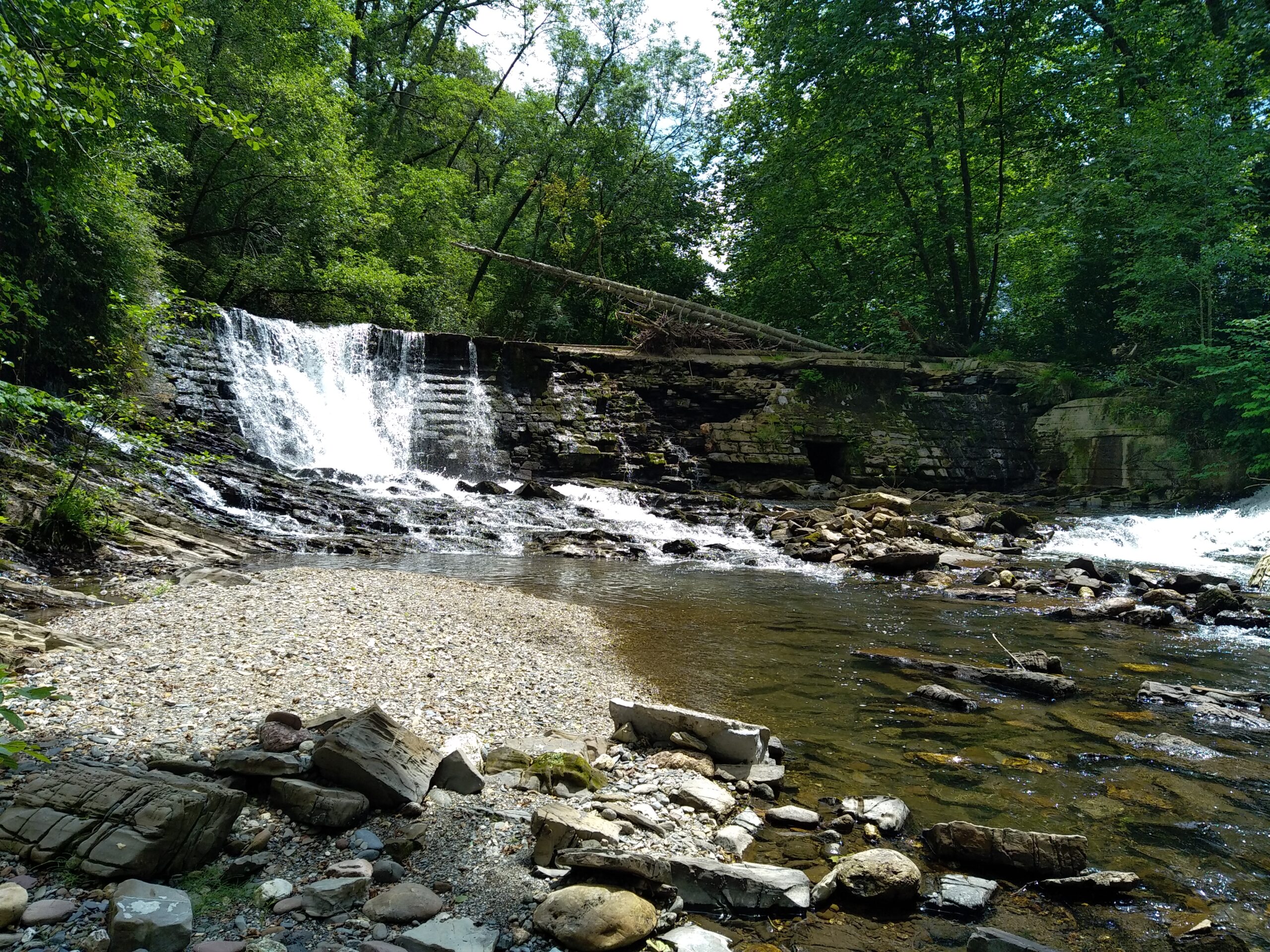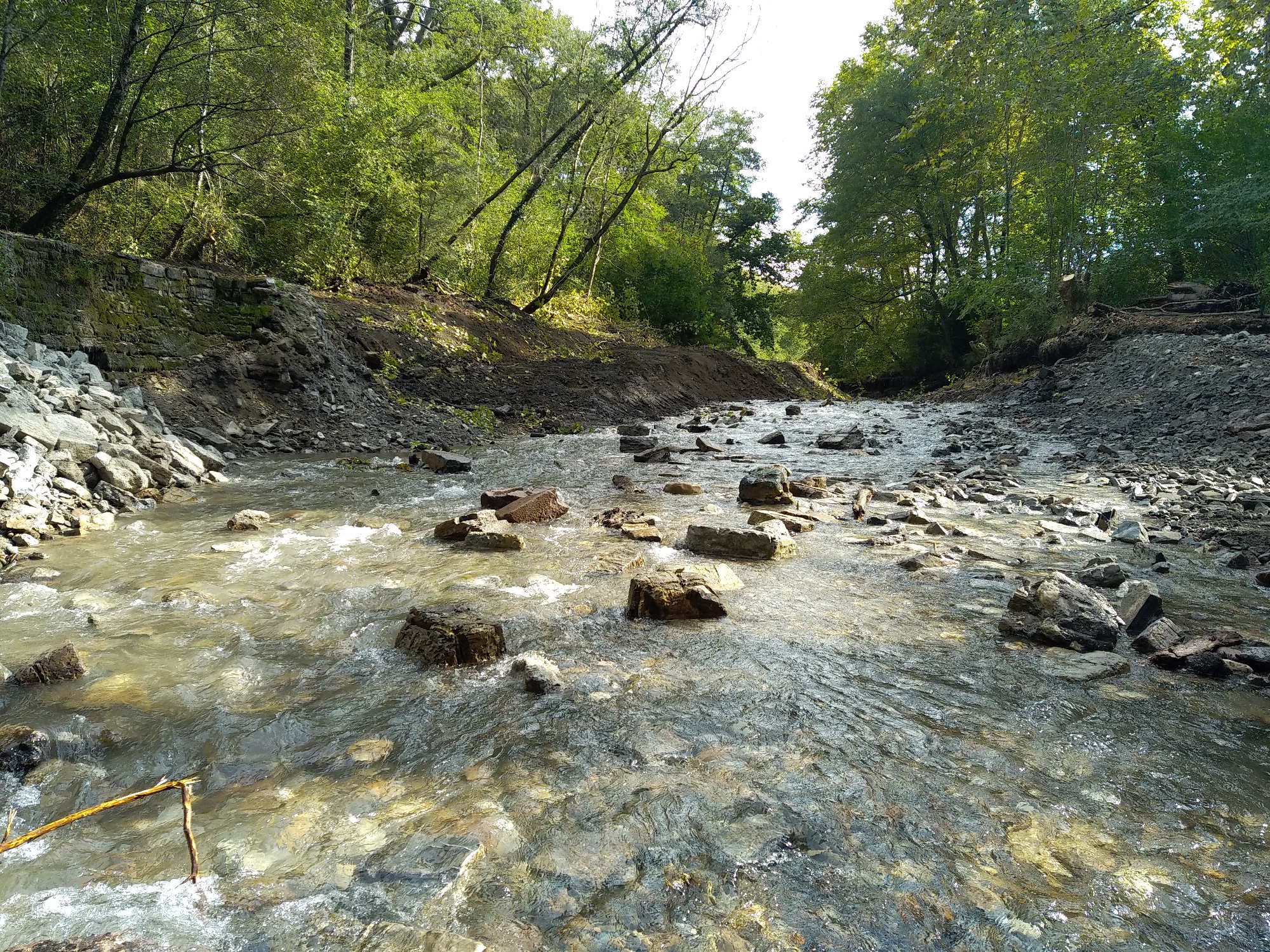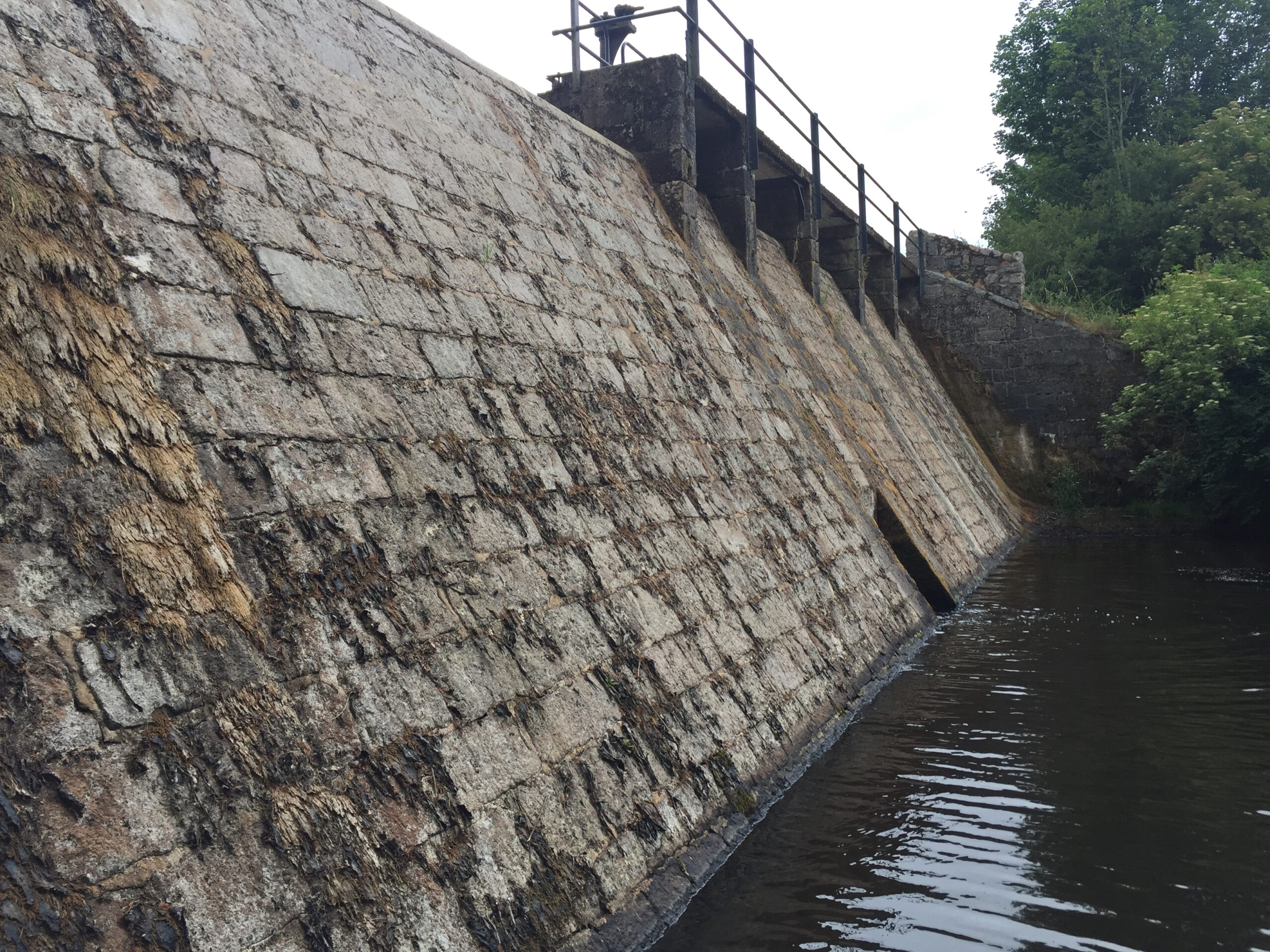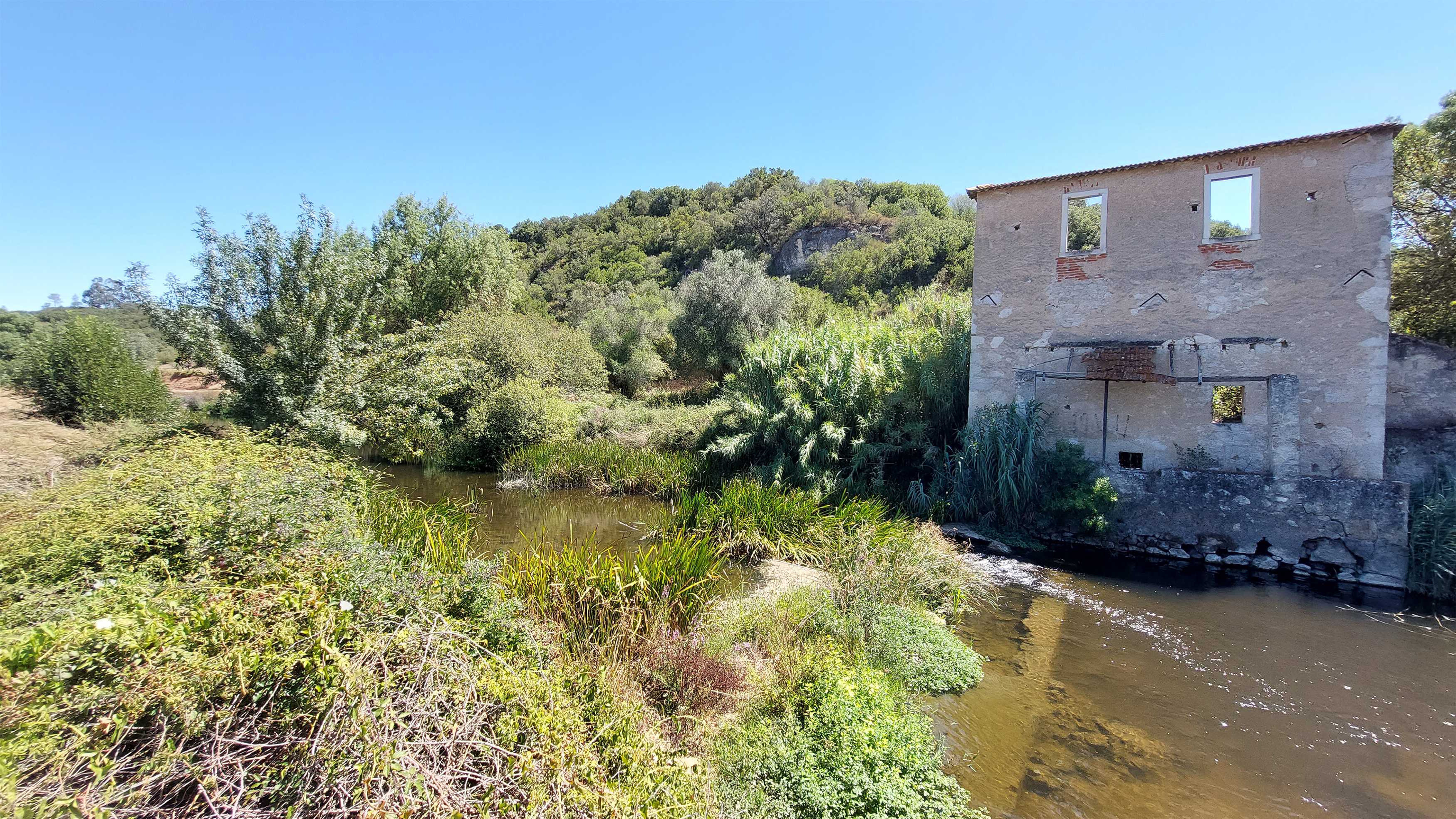
Get to know the final Dam Removal Award 2023 nominees and vote on your favourite project
Dam Removal Europe, the World Fish Migration Foundation, the European Investment Bank, and The Nature Conservancy, supported by the Dutch Postcode Lottery, Forest Peace Foundation and ABN AMRO Bank, bring you the third edition of the European Dam Removal Award.
The most inspiring project will be awarded a special trophy and 15.000 Euros towards the team’s next removal project, and the winner will be revealed during the upcoming Free Flow Conference in Groningen, The Netherlands.
Join us in celebrating the dedication and passion of dam removal practitioners, river users, communities, and authorities who are committed to restoring our rivers to their natural, free-flowing state. Vote now!
Public vote is open until March 22 at 11:59pm CET!
Continue reading to get to know all about the finalists!
Urrutienea dam removal in France
Reconnecting the Nivelle
In the heart of a picturesque cross-border landscape lies the Nivelle River – a vital lifeline for both Spain and France. But for centuries, this tranquil waterway harboured a silent barrier, a 5-metre-high weir that stood as an impassable fortress against migratory fish, including the salmon, eels and other emblematic species (freshwater pearl mussels, Pyrenean Desman, European otters, white-clawed crayfish and more).
A hotpost for nature… and people!
Just two months after the dam removal work was completed, the team observed extraordinary results. The first Atlantic salmon spawning grounds 6km upstream of the dam removed in Spain – for the first time in several centuries!
Besides its rich biodiveristy, the Nivelle river is a major focus of interest for this touristy region in Summer.

An obsolete dam is finally dismantled
The 5m-high dam had been out of use for 10 years! The French association behind the removal project fought to buy the site in order to dismantle it completely. On the Spanish side, their partners had already worked on removing the obstacles, and they knew that this dam was the last totally impassable dam on the Nivelle.
Their main obstacle was to convince the local authorities that economic development (hydroelectricity) could not be achieved at the expense of local biodiversity. In total, the situation took 20 years to unblock!
“We believe that the turning point was the innovative work carried out to conserve the freshwater pearl mussel on the Nivelle. This species lives in symbiosis with the salmon. We began conservation and restoration work on this population (the only genetically unique population in the Pyrenees) in 2020. These actions include breeding to reinforce the natural population, which was threatened with extinction within the next 10 years. We convinced the local community that destroying the dam was essential to reclaiming the entire upstream watershed, and that the pearl mussel conservation program only made sense if it was accompanied by strong habitat restoration measures”, explained one representative of the Fédération des Pyrénées-Atlantiques pour la Pêche et la Protection du Milieu Aquatique.

Another key point was to involve numerous partners in the project. From scientific research organizations (INRAE), associations (AAPPMA Nivelle, CEN Nouvelle Aquitaine, MIGRADOUR), the Navarre Government, vocational high school (which houses the facilities for the ex-situ pearl mussel breeding project), and foundations (Fishermen’s French foundation, Arcadia foundation). Another proof that when it comes to restoring free-flowing rivers, unity makes force!
The removal of Garlogie Dam in Scotland
Against heritage and ecological constraints, Garlogie dam is removed
In Scotland’s scenic landscape, lies Garlogie Dam – a barrier that once hindered the natural flow on a major tributary of the River Dee. But in a bold move, the central section of this imposing structure was removed, opening access for migratory fish to over 30 kilometres of upstream river!
Garlogie reservoir was 3 hectares of open water located 15 kilometres west of Aberdeen. Its 6-metre-high dam, spanning more than 50 metres across, now boasts a central void large enough to accommodate a double-decker bus, marking this as the most significant Scottish dam removal in a decade!
This monumental undertaking, initiated in 2013, was a collaborative effort from the outset. The River Dee Trust (RDT) and the association of Rivers and Fisheries Trusts (RAFTS) joined forces, supported by the Water Environment Fund, to meticulously assess barriers throughout the River Dee catchment area. Their shared goal was clear: explore restoration options for Garlogie Dam, driven by the imperative of salmon conservation and River Basin Management Plan (RBMP) objectives.

A collaborative journey for river restoration
Working hand in hand with the dam’s owner and expert consultants, the project team meticulously crafted a compelling case for removal. Grounded in ecological benefits, feasibility studies, flood risk reduction, and long-term sustainability, their evidence-based approach countered early opposition from local government, community groups, and heritage advocates.
Choices during the design phase were intentionally made to reduce waste from the site (by minimising and recycling material) and maximise the carbon sequestration value of restored habitats within the area of the reservoir (by creating hydrological connectivity with the river and encouraging tree growth). A high weighting on NetZero methods during the procurement of contractors secured the use of solar-powered equipment and the use of Hydrogenated Vegetable Oil in construction plant, significantly reducing the carbon footprint of the works.

A conservation triumph is achieved
The removal of the central portion of Garlogie Dam in 2023 marked a triumph for conservation, garnering widespread acclaim in the local media. But the journey doesn’t end here. Planned future endeavours include wetland creation, the installation of Large Wood Debris (LWD) structures, community tree planting initiatives, and the installation of an osprey platform.
In dismantling barriers and fostering collaboration, the Garlogie Dam Removal Project serves as a beacon of hope for rivers worldwide, demonstrating the transformative power of collective action in restoring and preserving our natural heritage.
Vaqueiros Weir Removal in Portugal
A pioneering intervention
Despite extensive exploration and outreach efforts, Portugal had made little progress in dam removal initiatives, lacking a comprehensive program for such endeavours. In a country where dam removal is not yet a reality, the most significant changes were social and political.
In a pioneer intervention, combining the efforts of public bodies and an NGO to promote river connectivity, GEOTA restored a 100m section of the Alviela River, stabilizing banks, recovering riparian gallery and, by removing the weir, reestablishing river connectivity in 3.3 km (6.5% of the river)!

Bringing the community on board
Alviela’s riverside communities have historical concerns about ecological issues, as pollution, but still reflect the widespread perception in Portugal of dams as a benefit. Thus, conveying the importance of dam removal was our greatest challenge.
Local population, municipalities, parishes, associations and landowners were invited to clarification sessions about the project and how it would change the river. “We decided to tell the story of the river, highlighting its memory and recalling past uses and customs. We focused on close dialogue with focus groups, explaining river concepts and the importance of climate action”. We created materials and invested in interviews with local and national media and, gradually, the project began to make sense to different stakeholders”, explained a member of GEOTA.
With funding by MAVA Foundation and support from DIMFE, rehabilitation began, and on April 17, 2023, we invited stakeholders to witness this historic dam removal in partnership between an NGO and municipalities. An interpretation board at the site will keep raising awareness and perpetuating the initiative.

How removing a weir sparked a National Program for Dam Removal
Measuring approximately 14 metres wide and 1.1 metre high, the weir presented a significant barrier to river flow. With the support of the municipalities of Santarém and Alcanena, the Portuguese Environment Agency, and E.Rio, a river restoration company, the team embarked on the ambitious task of removing the obsolete weir from the Alviela River.
The project garnered widespread attention from both local and national media, sparking public discourse and debate. Its significance reverberated throughout Portugal, culminating in a groundbreaking announcement by the Minister for Environment and Climate Action: the initiation of a National Program for the Removal of Obsolete Barriers, signalling a collaborative effort between the government and NGOs to address this critical environmental issue.
We know, it’s hard to pick one from these amazing projects, but we count on you to help us decide.
Public vote is open until March 22 at 11:59pm CET! Vote now!
More Dam Removal news?


Join the discussion 6 Comments